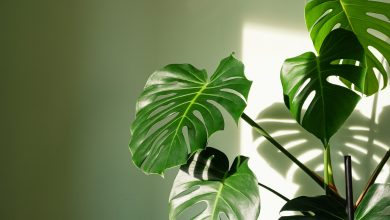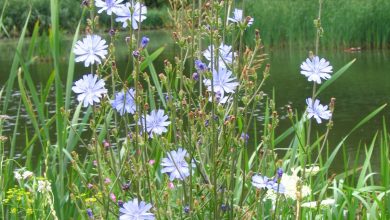15 Best Plants for Wet Areas
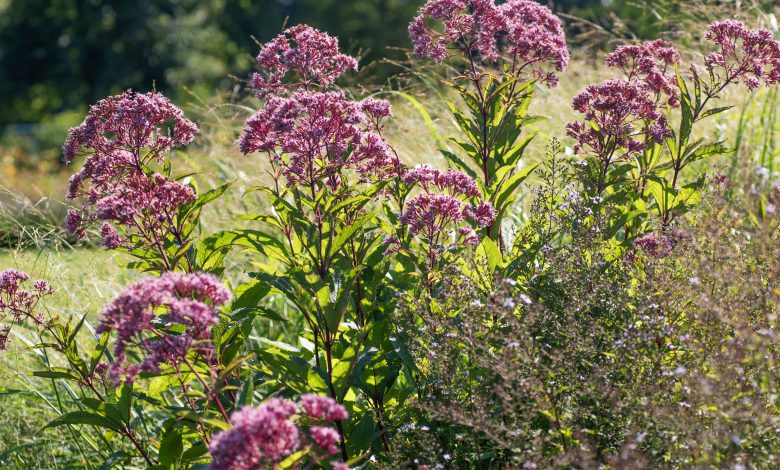
In this article we show you a list of the best plants that you can plant in your garden in case you live in a high humidity area and the soil in your house does not drain well (and is always moist).
Another possible way is simply to plant plants that prefer to live in humid areas, right?
Many native plants have evolved to grow in moist soil, making them effective landscape solutions for areas with drainage problems.
They will grow where many other plants do not and will absorb water runoff. In this article we are going to show you 15 plants that grow and adapt well in humid environments.
Can you come with us?
List of the best plants for humid areas
Black Choke (Aronia melanocarpa)
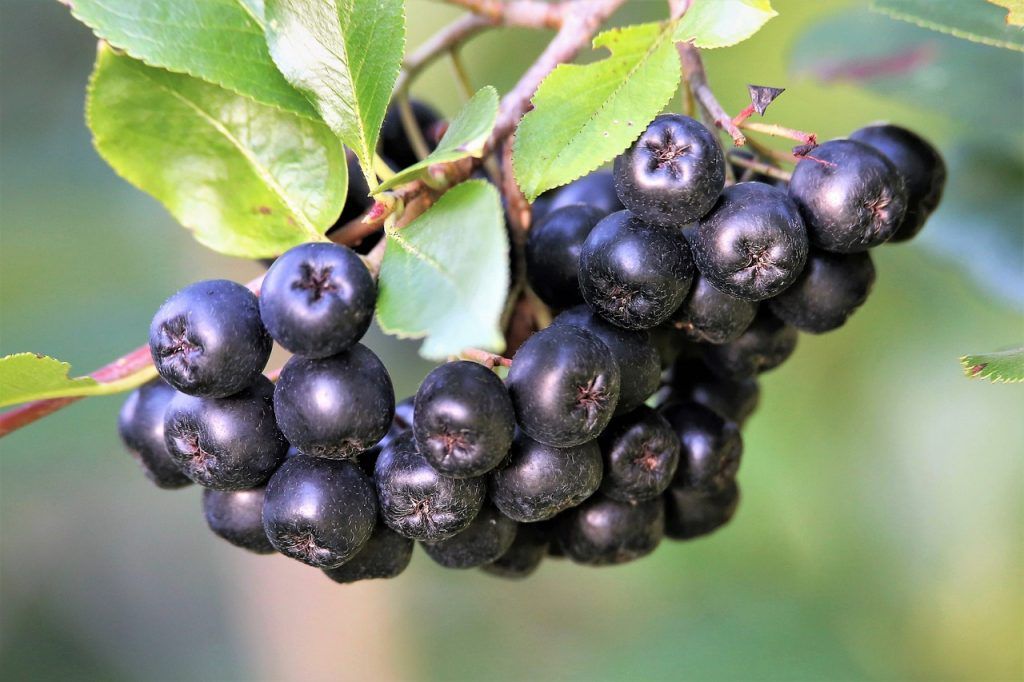
The Black Choron is a deciduous shrub that reaches between 1 and 2 meters in height and extension.
In spring, it flowers showily in white and gives way to small black berries that attract birds.
Its foliage turns a reddish-purple color in fall. This plant is native to swamps, marshes and humid thickets. It can adapt to various types of soil, as long as uniform moisture is maintained.
Also, be sure to promptly remove suckers from the roots to prevent unwanted spread.
- Color varieties: White.
- Sun Exposure: Full sun to partial shade.
- Soil Needs: Medium, medium moisture, good drainage.
Winter Holly (Ilex verticillata)
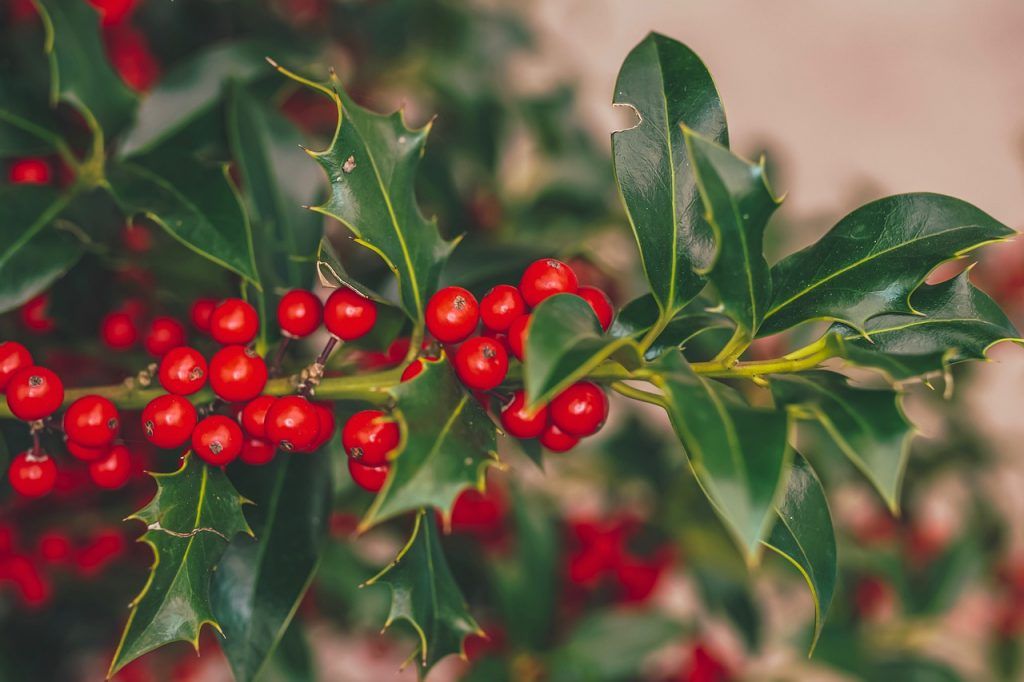
The Winterberry is native to the swampy areas of eastern North America.
Therefore, it prefers to grow in moist, acidic clay soils, and can tolerate poor drainage. This shrub can reach between 3 and 12 feet in height and spread.
Also, the winterberry is dioecious, meaning it needs a corresponding plant of the opposite sex growing nearby for the plants to set fruit. Prune your plants to shape them in early spring, before new growth begins.
- Color varieties: Greenish white.
- Sun Exposure: Full sun to partial shade.
- Soil Needs: Medium, acidic, medium to moist.
Ink Holly (Ilex glabra ‘Densa’)
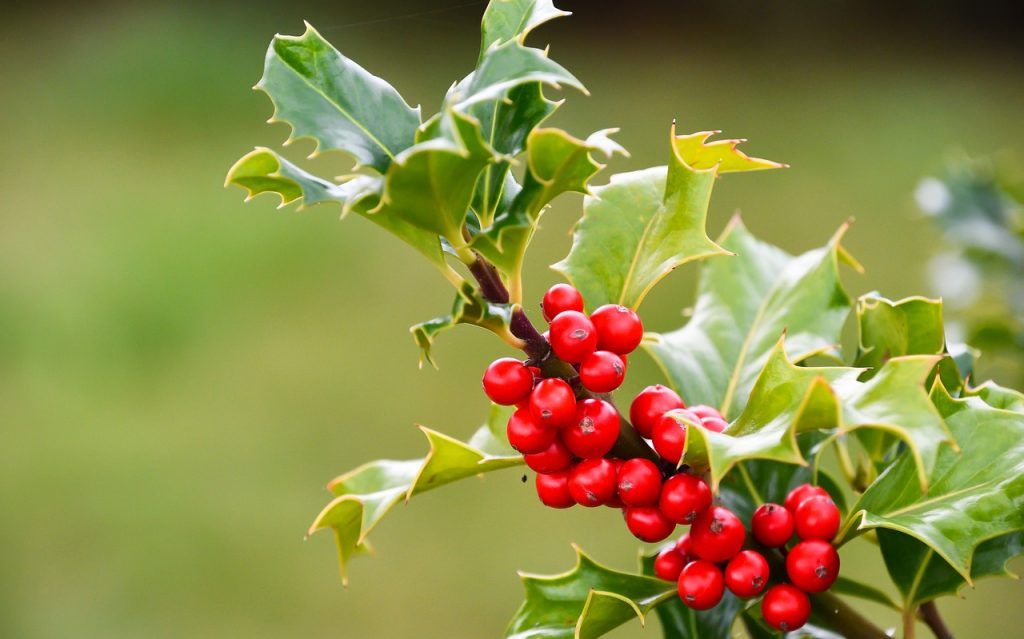
Ink holly is also native to eastern North America, where it is often found surrounding swamps and bogs.
This evergreen shrub can reach 1.5 to 2 meters in height and spread, and produces black berries in early fall if plants of the opposite sex grow close together.
These shrubs typically require minimal pruning, but any touch-ups should be done in early spring, before seasonal growth begins.
- Color varieties: Greenish white
- Sun Exposure: Full sun to partial shade
- Soil Needs: Medium, medium to moist.
Indian willow (Salix discolor)
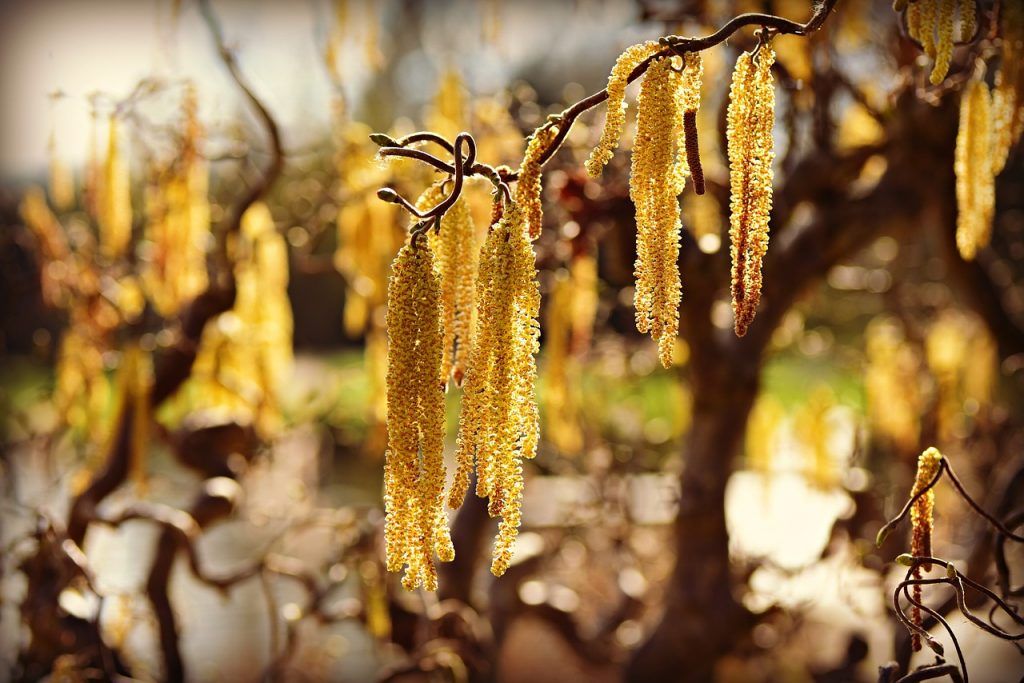
The marsh willow is a wetland shrub that grows throughout North America in prairies and swamps and along streams and lakes.
But it also has some tolerance to dry soil.
Under suitable conditions, these shrubs can reach 2-5 meters in height with a spread of 1.5-4 metres. Prune them in late winter or early spring as needed.
- Color varieties: Yellow.
- Sun Exposure: Full sun to partial shade.
- Soil Needs: Medium, medium to moist, with good drainage.
Sweet pepper (Clethra alnifolia)
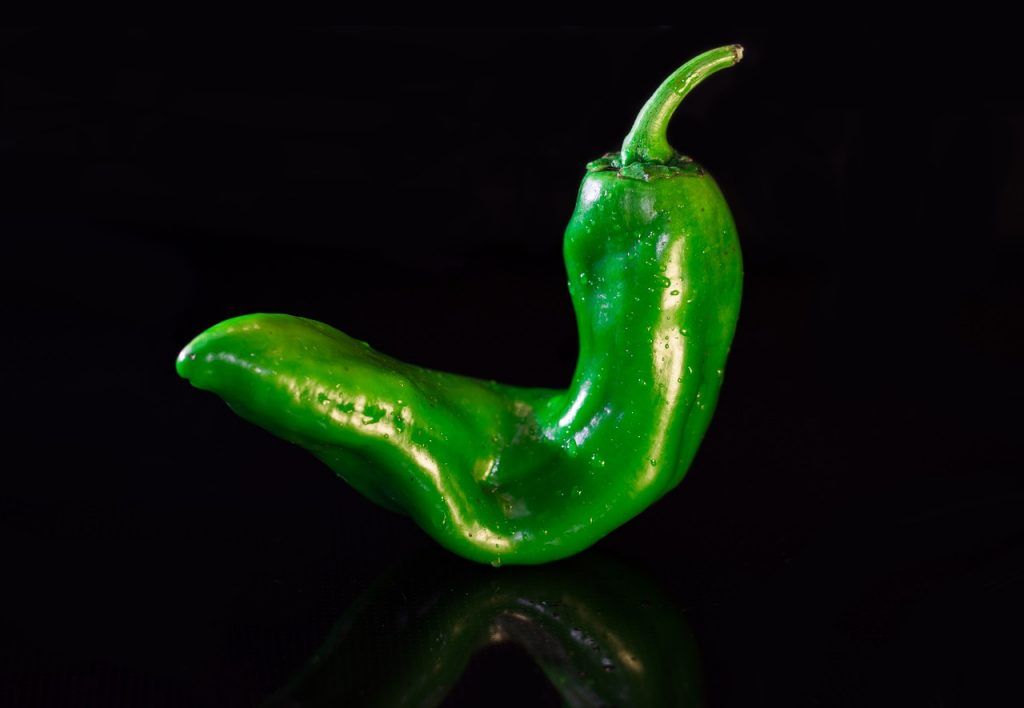
The sweet pepper bush grows in moist forests and swamps, as well as along streams and shorelines.
It reaches between 60 and 250 centimeters in height with a spread of 120 and 160 centimeters. During the summer it produces long, fragrant flower spikes that often attract butterflies and bees.
Keep the soil around your bush constantly moist by watering and raining. And prune as needed in late winter.
- Color Varieties: White
- Sun Exposure: Full sun to partial shade
- Soil Needs: Medium, medium to moist.
Tataria dogwood (Cornus alba)
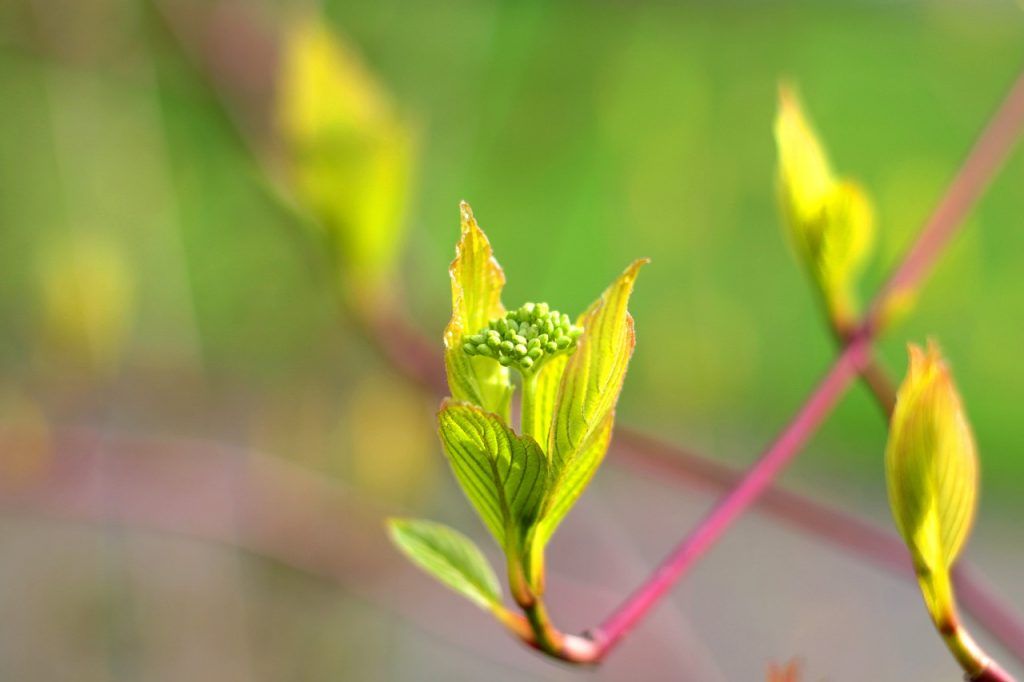
The Tataria dogwood, also known as the red-wig dogwood, is ideal for use in a rain garden, as it prefers consistently moist soil.
This shrub can reach between 2.5 and 3 meters in height and spread, and is prized for its red bark.
To encourage growth, prune a quarter of the old stems in early spring each year. If you prefer a shrub with golden bark, consider the yellow dogwood (Cornus sericea ‘Flaviramea’).
- Color varieties: White.
- Sun Exposure: Full sun to partial shade.
- Soil Needs: Rich, moist, with good drainage.
Hog Beak (Bergenia cordifolia)
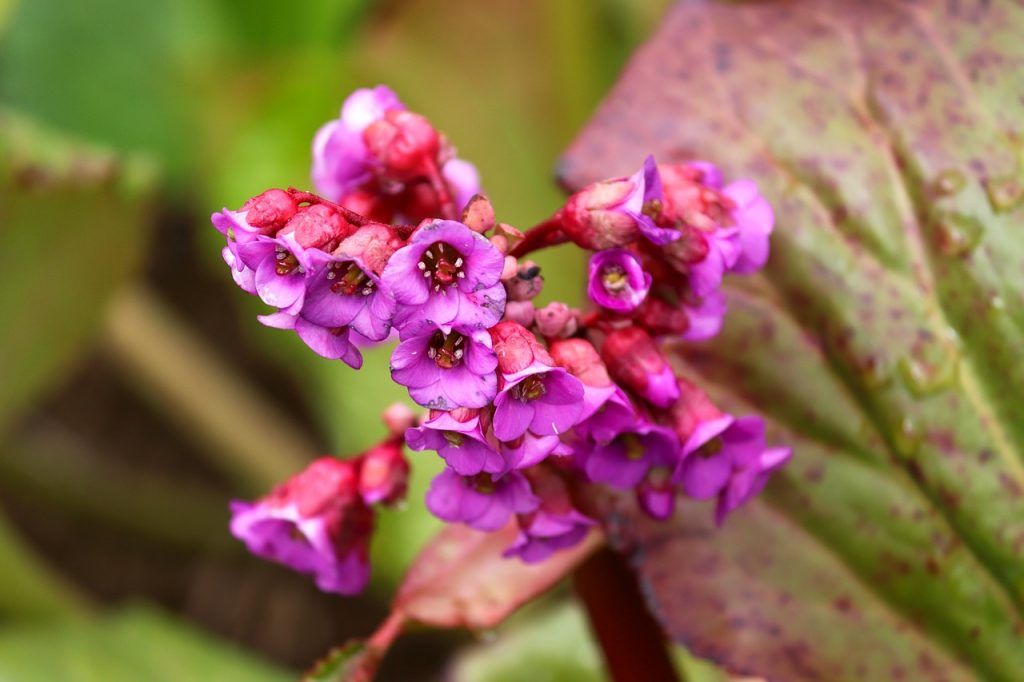
Hogbill is a perennial plant grown primarily as a ground cover.
It got this name because its leaves make a squeaking noise when rubbed between your fingers. The plant reaches between 30 and 45 centimeters in height and spread.
It not only tolerates moist soil, but also grows well in shade. Prune any damaged, dead, or diseased foliage in late winter or early spring.
And promptly remove spent blooms in spring to promote more blooming.
- Color varieties: Pink.
- Sun exposure: Medium shade to full shade.
- Soil Needs: Medium, with good drainage.
Horsetail (Equisetum hyemale)
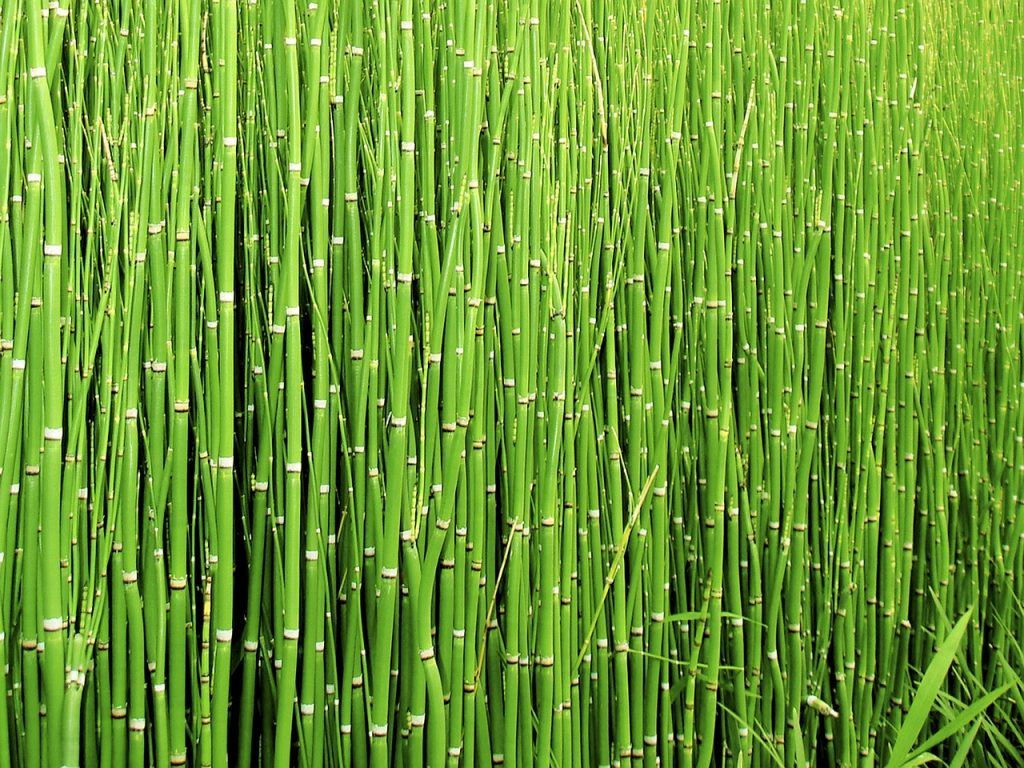
Horsetail tolerates a wide variety of conditions, including those where the soil is moist.
In the wild, these plants grow in moist forests and along bodies of water.
They reach between 40 and 60 centimeters in height and a spread of 1 to 2 meters.
And under the right conditions, they can be aggressive in their spread. So be sure to quickly and completely remove rhizomes (underground stems that send out new shoots) from where you don’t want them.
- Color varieties: Does not bloom.
- Sun Exposure: Full sun to partial shade.
- Soil Needs: Medium, medium to moist.
Leopard plant (Ligularia dentata)
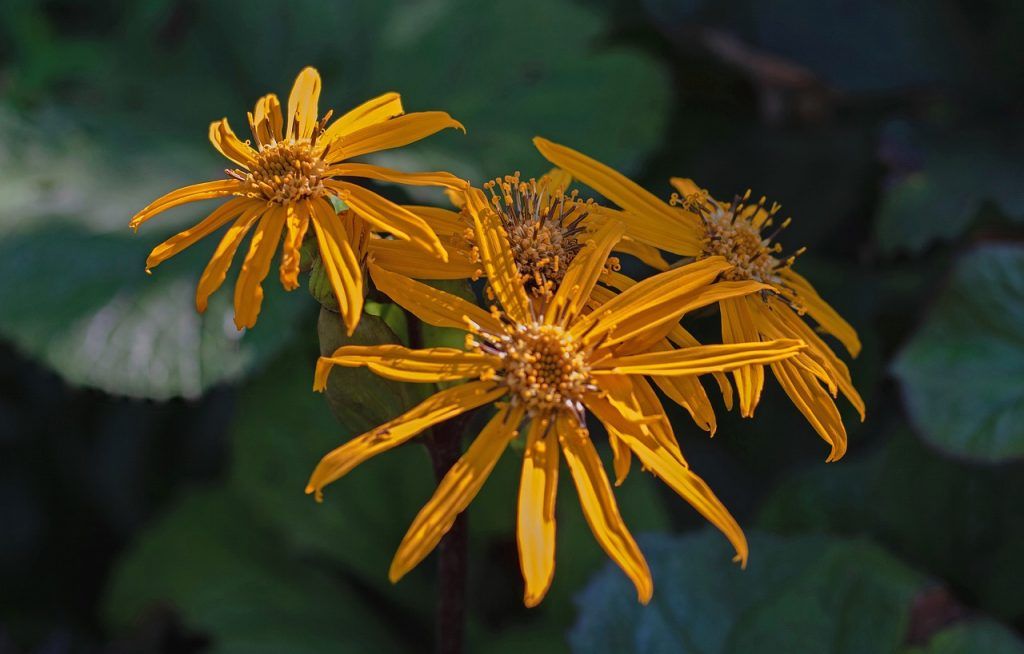
Leopard plant is a great choice for growing around water features and in rain gardens.
Its showy yellow-orange flowers, which bloom in early summer, are similar to daisies. And its large leaves are an interesting dark purple color with some green tones. This plant only reaches about 60 cm in height and a slightly smaller spread.
Water regularly and thoroughly so that the soil never dries out. And make sure it has some shade, especially in hot weather.
- Color varieties: Yellow-orange.
- Sun Exposure: Partial shade to full shade.
- Soil Needs: Rich, medium to moist.
Marsh marigold (Caltha palustris)
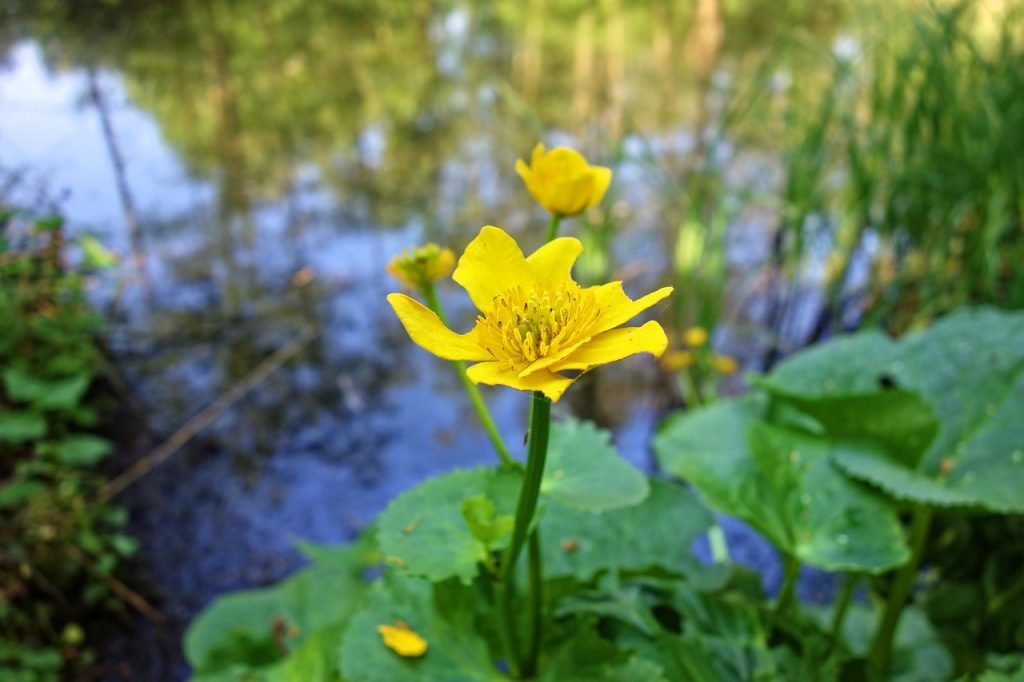
If you’ve ever hiked through the woods in spring, you may have found marsh marigolds blanketing a marshy area with their cheery yellow flowers.
These plants work well around water features in the garden, especially in the margins of ponds. They can even grow in some standing water. Marsh marigolds reach 12 to 2 inches tall and spread out.
They are generally low maintenance, although you should make sure they get some shade during the hotter months.
- Color varieties: Yellow.
- Sun Exposure: Full sun to partial shade.
- Soil Needs: Moist, boggy.
Yellow trout lily (Erythronium americanum)
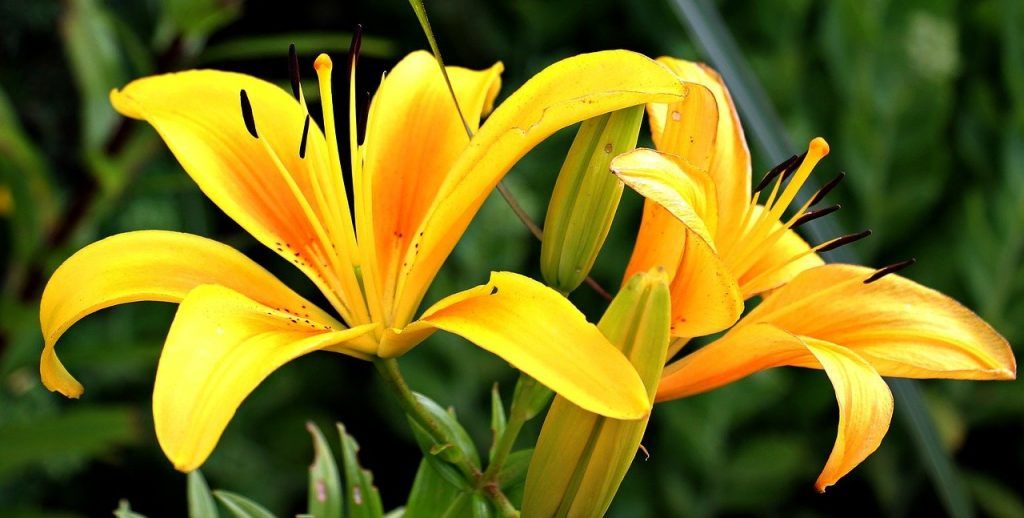
The yellow trout lily, also known as yellow adder’s tongue, grows naturally in moist forests and along streams in North America, and thrives in the shade.
Therefore, it is an ideal plant for shade gardens and around ponds.
It has showy yellow flowers in spring before going dormant.
The plant can be grown from seed, although it can take up to five years to flower. Instead, many gardeners opt for cuttings from mature plants.
- Color varieties: Yellow.
- Sun exposure: Medium shade to full shade.
- Soil Needs: Humusy, acidic, moist.
Viburnum dentatum
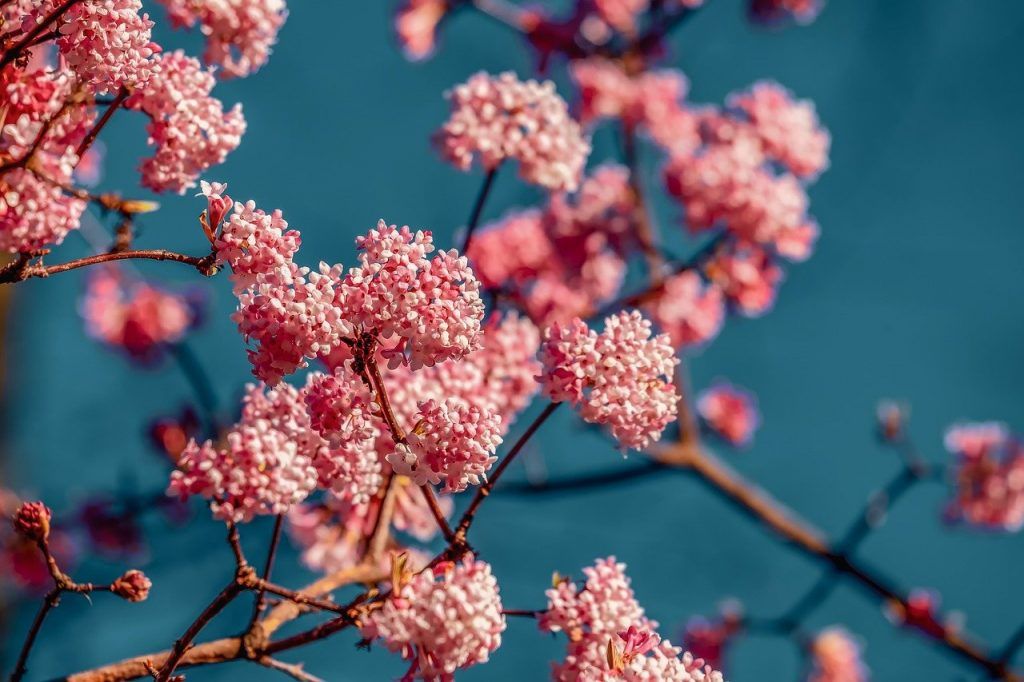
Arrowwood viburnum also features showy white blooms in late spring, as well as dark blue berries. Its green leaves change to shades of red, orange and yellow in autumn.
This shrub can reach between 1 and 3 meters in height and spread. It prefers moist, loamy soil and needs good drainage. Prune the bush back to shape just after it has finished flowering.
- Color varieties: White.
- Sun Exposure: Full sun to partial shade.
- Soil Needs: Medium, medium moisture, good drainage.
Blue flag iris (Iris versicolor)
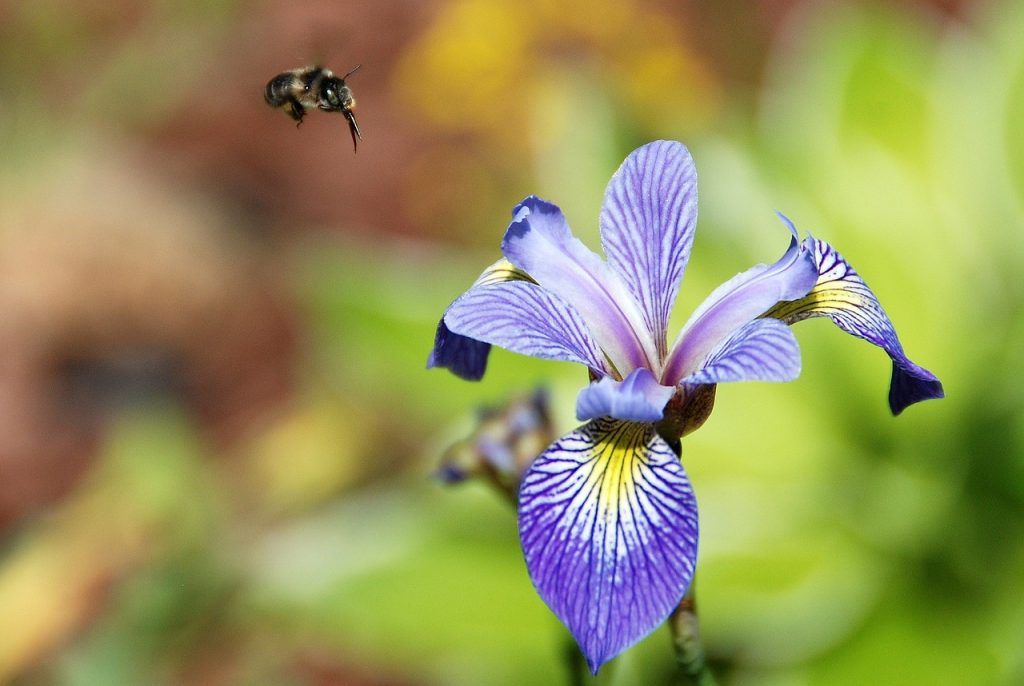
The water-loving blue flag iris is native to grasslands, swamps, bogs, and coastal North America. It reaches 40 to 60 centimeters in height and spread, and blooms a showy blue-violet color in late spring.
Make sure your plant has adequate humidity; even a little standing water is fine. And watch out for pests, as this plant is susceptible to various insects.
- Color varieties: Blue-violet
- Sun Exposure: Full sun to partial shade
- Soil Needs: Humusy, moist
Joe Pye weed (Eupatorium maculatum)
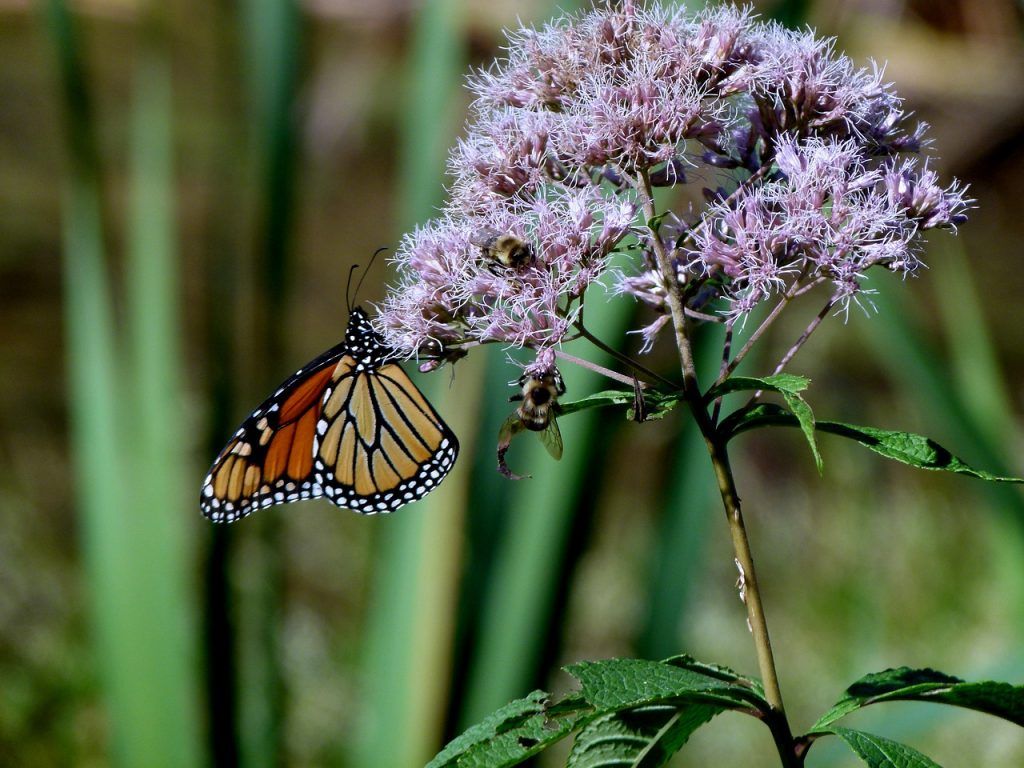
If you’re looking for a tall plant for a sunny rain garden, consider Joe Pye grass. This perennial plant usually reaches a meter or meter and a half with an extension of 50 centimeters.
It produces fragrant mauve flowers in summer that often attract butterflies. Although this plant prefers full sun, it may need some shade in the afternoon when it’s hot.
Mow Joe Pye grass close to the ground in late winter to promote cool growth.
- Color varieties: Mauve.
- Sun exposure: Full sun.
- Soil Needs: Rich, medium to moist.
Cardinal flower (Lobelia cardinalis)
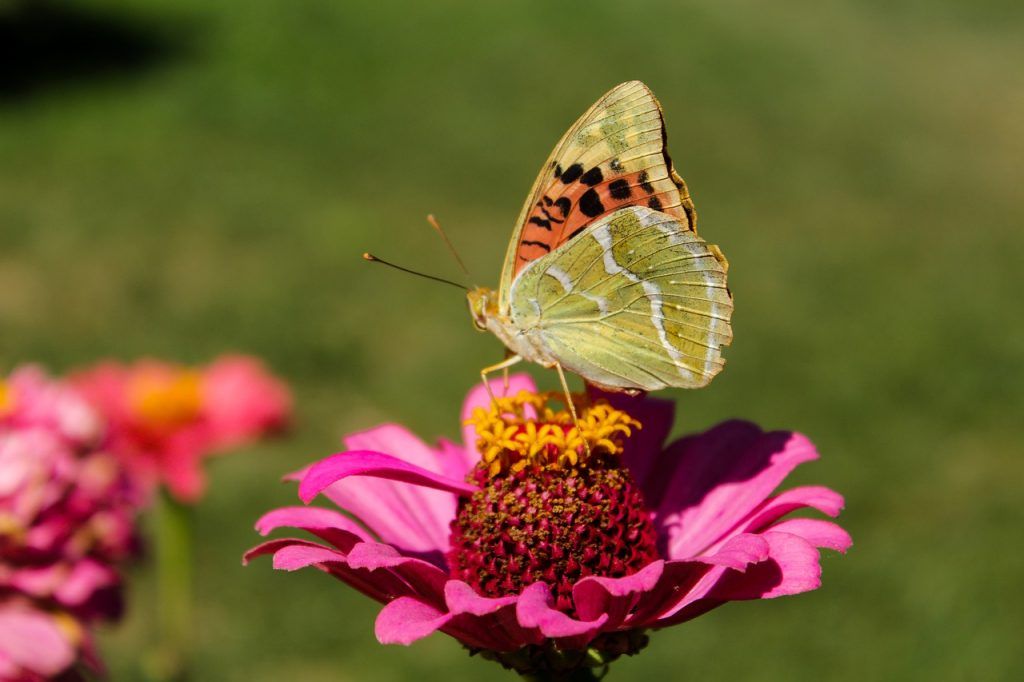
Cardinal flowers grow best in rich soil and prefer constant moisture. In the wild, they are often found along streams and swamps and in low-lying wooded areas.
And they are an excellent choice for growing around a pond. They reach between 60 and 120 centimeters in height with a spread of 30 and 60 centimeters.
Give your plants some afternoon shade during the hottest part of the year.
And add a layer of mulch if you need help retaining soil moisture.
- Color varieties: Red, white, pink.
- Sun Exposure: Full sun to partial shade.
- Soil Needs: Rich, medium to moist.

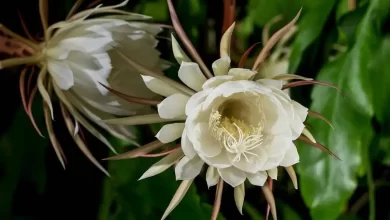
![Photo of Prune a Laurel: [Importance, Time, Tools, Considerations and Steps]](https://www.complete-gardening.com/wp-content/uploads/2022/08/prune-a-laurel-importance-time-tools-considerations-and-steps-390x220.jpg)
